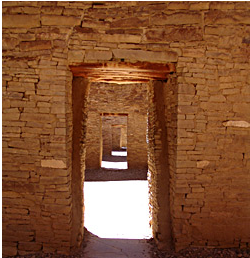Publication Date
5-19-1969
Abstract
This paper deals with three peasant communities; the Tzotzil Indians of Zinacantan, in Chiapas, Mexico; the Quechua Indians of Hualcan, in Ancash, Peru; and the Mixtec Indians of Santo Domingo barrio, in Oaxaca, Mexico. The problem investigated is the relationship of hierarchical or egalitarian structures in religion to the familial, economic, and political organizations in all three communities. In Zinacantan and Hualcan, it was found, the type of religious organization and family relationships corresponded to each other in their hierarchical character: (1) full participation in the religious hierarchy open only to men, who are ranked by status, accords with (2) a hierarchy of differential status and authority for kinsmen based on sex and on absolute and relative age. In Juxtlahuaca, the type of religious organization and family relationships correspond to each other in their egalitarian character: (1) full participation pf women as well as men in cofradias and no status ranking, religious features which correspond to (2) a lack of emphasis on differential authority and status according to the sex and age of kinsmen. These correspondences between family and religion indicate a coherency of structure and content suggestive of stability. In economic organization, the hierarchical and egalitarian emphases are manifested in Hualcan as few secondary occupations for women; and in Juxtlahuaca, by the wide range of secondary occupations for married women and full-time work, away from the village, for young women. In Hualcan, minka, a labor group that makes for status ranking, accords with the hierarchical emphasis. While in Hualcan religion and local politics are closely related, political and economic organization in all three communities relate, rather, to the corresponding national structures. The differences between Mexico and Peru in terms of access to land, and relative wealth (as in Zinacantan) or lack of land and peon status (as in Hualcan) seem to relate to the agrarian reform movement and Indianist policy in Mexico. Villagers in the Mexican communities may elect local authorities; corvée benefits their villages. In Hualcan, however, the superordinate political network demands corvée for the region but grants no voting rights. These differences are traced to the establishment of a federal system of government in Mexico and to continuity of centralized colonial rule in Peru. Although the Indian villagers in all three communities occupy the lower stratum within their local interethnic stratification, the Indianist policies in Mexico and Peru indicate a differential status and welfare for their Indian peasantries. In Hualcan outside wage labor is effecting changes in cooperative labor and religious content. A similar process is predicted for Juxtlahuaca as population growth changes the land-man ratio.
Document Type
Thesis
Language
English
Degree Name
Anthropology
Level of Degree
Masters
Department Name
Anthropology
First Committee Member (Chair)
Stanley Stewart Newman
Second Committee Member
Karl H. Schwerin
Third Committee Member
Philip K. Boch
Recommended Citation
Cruz-Sandoval, Luis Fernando. "Hierarchy and Equality in Three Latin American Peasant Communities." (1969). https://digitalrepository.unm.edu/anth_etds/207

